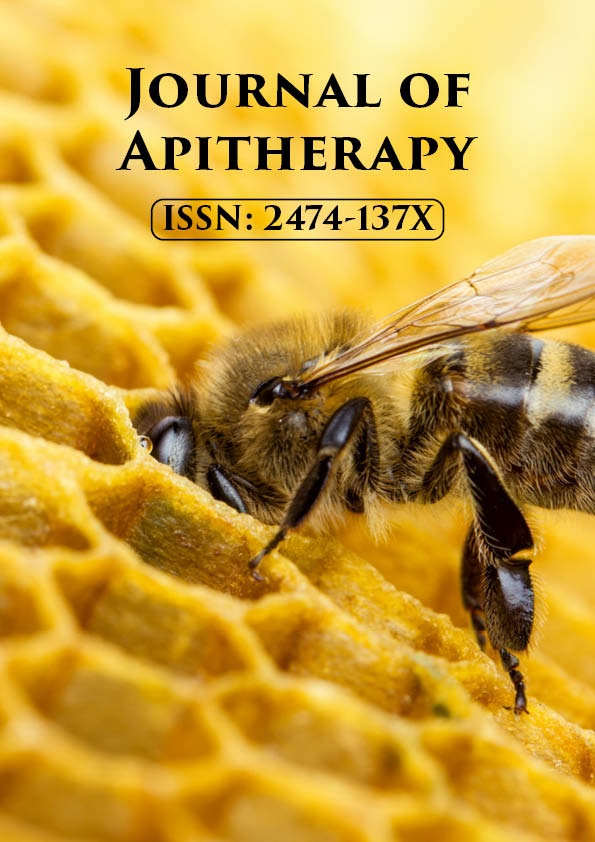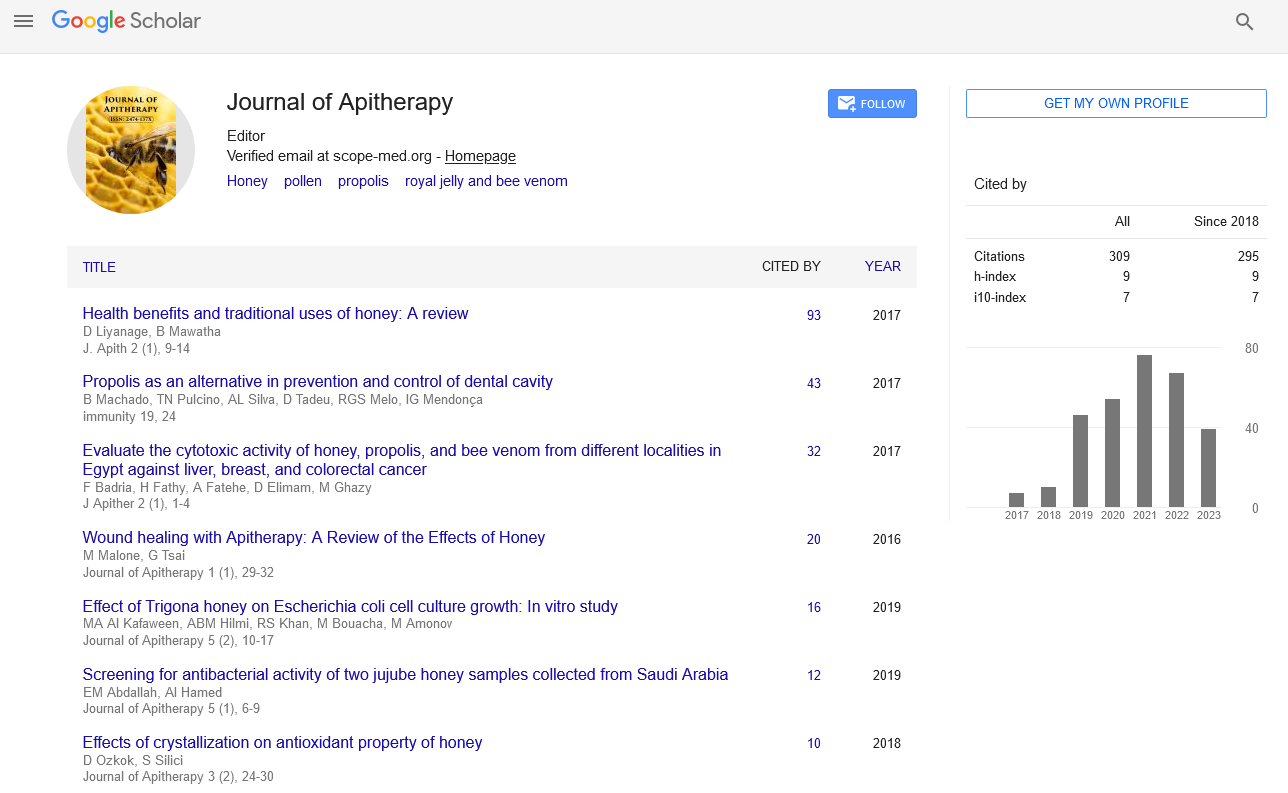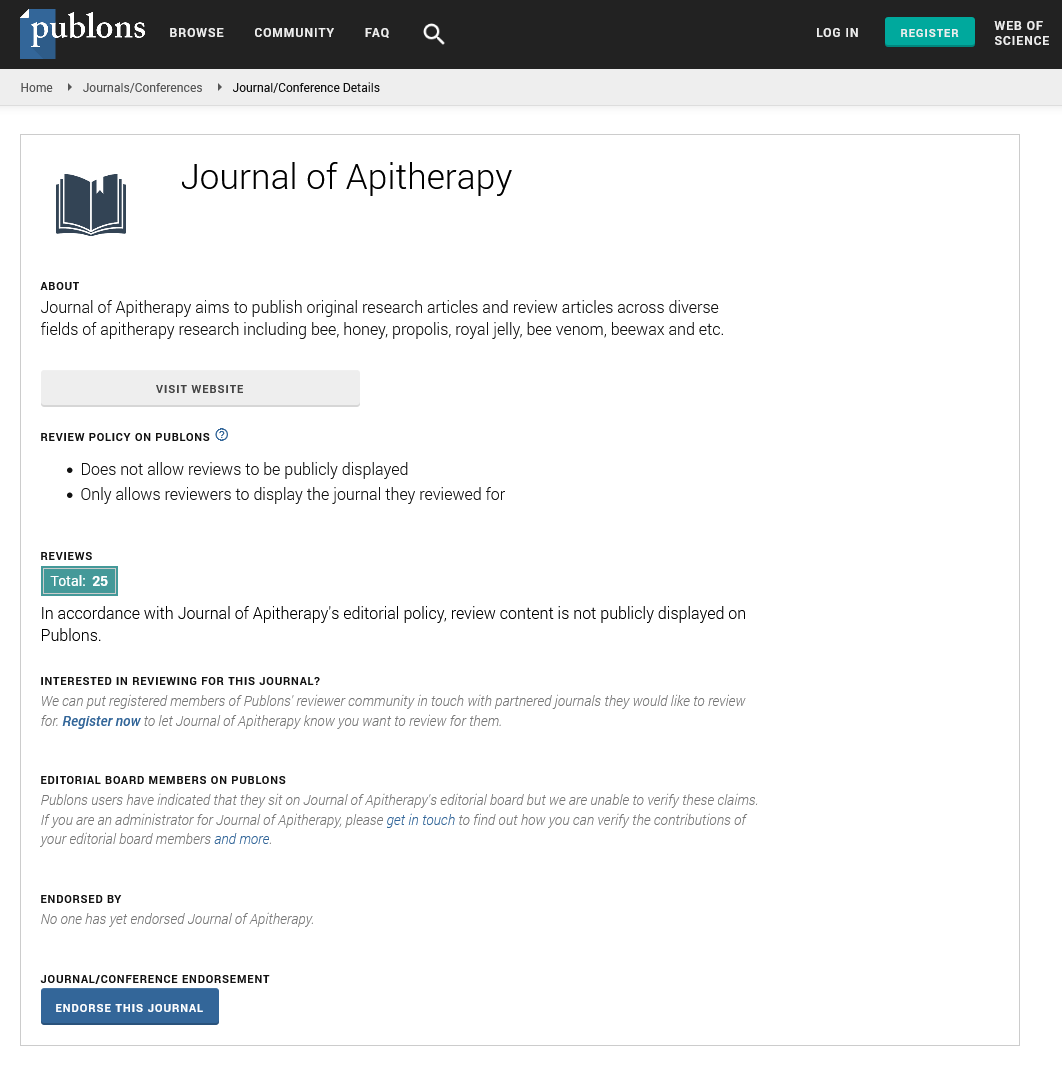Perspective - Journal of Apitherapy (2023)
The Health Supplements of Bee Pollen
John David*John David, Department of Apiculture, Harvard University, Cambridge, USA, Email: johndavid112@hotmail.com
Received: 05-Jan-2023, Manuscript No. Japitherapy-23-90197; Editor assigned: 09-Jan-2023, Pre QC No. Japitherapy-23-90197(PQ); Reviewed: 23-Jan-2023, QC No. Japitherapy-23-90197; Revised: 30-Jan-2023, Manuscript No. Japitherapy-23-90197(R); Published: 06-Feb-2023
Description
Bee pollen, commonly referred to as bee bread or ambrosia, is a ball or pellet made from field-collected flower pollen that is fed to the hive as its main food source. Fatty acids, simple carbohydrates, protein, vitamins, minerals, and other things in traces are all present in it. In brood cells, bee pollen is kept together with saliva and sealed with a drop of honey. Bee pollen is harvested for human consumption, but it is also promoted for its alleged health advantages.
Pollen is kept in the hive chambers of honeybees (Apis species). Honey bee secretions cause a fermentation process, where biochemical changes cause the walls of flower pollen grains to crumble and render it different from pollen collected from the field. The proteolytic enzymes needed to digest pollen are no longer produced by foraging bees; therefore they do not consume the pollen themselves. A typical band of what is called bee bread, the substance that serves as the primary food source for honey bee larvae and workers, is created when foragers immediately deposit the pollen they have collected into open cells situated at the interface between the brood and stored honey. Pollen is brought back to the hive by foraging bees, who then distribute it to other worker bees, which use their heads to pack the pollen into cells. The pollen is combined with nectar and bee salivary secretions during collection and potentially packing, indicating the beginning of the lactic fermentation process. Bee pollen is the primary source, while honey and propolis are well-known bee products that are harvested, unlike royal jelly and beeswax, which are secreted. The exact chemical makeup of these products can vary greatly, depending on factors such as the bee colony, the apiary, and even the time of day. This means that the composition of these products can differ from day to day, week to week, and even hour to hour within the same colony or apiary. As a result, bee pollen chemical and nutritional analyses only relate to the particular samples being examined and cannot be generalised to samples collected at other locations or at different periods. According to claims, the typical composition of bee bread includes 40-60% simple sugars like fructose and glucose, 20-60% proteins, 3% minerals and vitamins, 1-32% fatty acids, and 5% various other components, although its chemical makeup remains unknown. Bee bread is known to contain lactic acid bacteria, Bifid bacterium, Bacillus species, and other microorganisms. Studies on bee pollen samples have revealed the presence of 188 different types of pollen and 29 types of bacteria. Despite this microbial diversity, stored pollen is similar to honey in terms of its preservation environment and consistently contains low levels of microbial biomass.
Use as a health supplement
Herbalists have promoted bee pollen as a cure for a number of illnesses. Due to its excellent nutritional value and abundance of bioactive components with antioxidant and antibacterial effects, bee bread is gaining commercial attention. Micronutrients, minerals, and phenolic compounds are abundant in bee bread.
Consuming bee pollen may come with dangers from pesticides, harmful metals, or fungus-derived mycotoxins. Bee pollen is safe for short-term use; however allergic responses could happen for people who have pollen allergies (shortness of breath, hives, swelling, and anaphylaxis). Bee pollen is unsafe for expectant mothers and shouldn’t be consumed while nursing. Certain bee pollen products have been advised against by the Food and Drug Administration because they are adulterer with unapproved drugs.
Copyright: © 2023 The Authors. This is an open access article under the terms of the Creative Commons Attribution Non Commercial Share A like 4.0 (https://creativecommons.org/licenses/by-nc-sa/4.0/). This is an open access article distributed under the terms of the Creative Commons Attribution License, which permits unrestricted use, distribution, and reproduction in any medium, provided the original work is properly cited.







